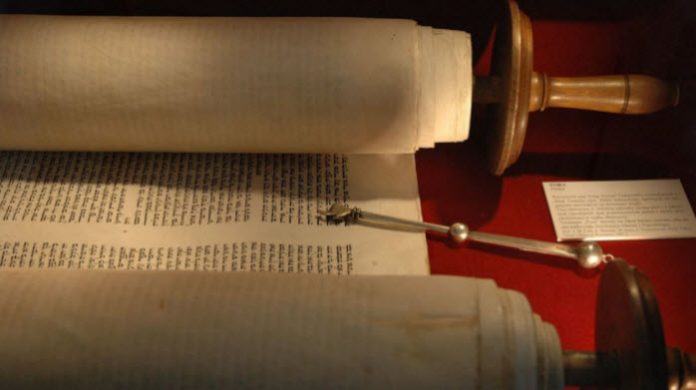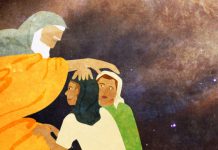Parashat Chukat and Parashat Balak, two consecutive Torah portions in the Book of Numbers (Bamidbar), present a fascinating juxtaposition of themes and events. Parashat Chukat explores the mysterious laws of purification through the ritual of the red heifer and recounts the story of Moses striking the rock. Parashat Balak introduces us to the enigmatic character of Balak, the king of Moab, and the extraordinary blessings of the prophet Balaam. In this article, we will delve into the essence of these Torah portions, examining the divine laws of purification, the challenges of leadership, and the unexpected blessings that unfold.
Parashat Chukat: Purification and the Mysterious Red Heifer:
Parashat Chukat begins with the intricate laws of purification, focusing specifically on the ritual of the red heifer. The red heifer, a completely red cow without blemish, was sacrificed and burned, and its ashes were used to purify those who came into contact with death. This ritual, though seemingly enigmatic, teaches us profound lessons about the nature of impurity, the significance of sacrifice, and the importance of adhering to Hashem’s commandments.
The laws of purification through the red heifer serve as a reminder that not all matters can be understood fully by human intellect alone. It teaches us humility and the need to submit ourselves to the divine wisdom of Hashem’s commandments, even when they may seem incomprehensible. Through the red heifer, we learn that purification is a process that requires trust in the divine and a willingness to follow Hashem’s instructions, even when they appear mysterious.
The Striking of the Rock:
Parashat Chukat also recounts the incident where the Jewish people, thirsty and frustrated, challenged Moses and Aaron, demanding water in the desert. In response to their outcry, Hashem instructed Moses to speak to the rock, which would then provide water for the people. However, Moses, in a moment of frustration and anger, struck the rock instead. This act of disobedience resulted in Hashem’s decree that Moses would not lead the Jews into the Promised Land.
The story of Moses striking the rock highlights the immense pressure and challenges faced by leaders. It serves as a cautionary tale, reminding us of the importance of acting in accordance with Hashem’s instructions, even in times of adversity. Moses’ actions demonstrate the consequences of allowing frustration and anger to cloud judgment and how a momentary lapse can have far-reaching implications. The narrative teaches us the significance of humility, patience, and adherence to Hashem’s guidance in fulfilling our roles as leaders.
Parashat Balak: Balak’s Plot and Balaam’s Blessings:
Parashat Balak introduces us to Balak, the king of Moab, who grows fearful of the Jewish people’s encampment near his kingdom. In an attempt to thwart their progress, Balak sends for the prophet Balaam, known for his ability to bless or curse. However, despite Balak’s repeated requests, Balaam is compelled by Hashem to bless the Jews instead of cursing them.
The encounter between Balak and Balaam reveals the profound truth that Hashem’s blessings cannot be thwarted by human schemes. Even though Balak sought to harm the Jews, Hashem turned his intentions into blessings. Balaam’s journey to curse the Jewish people transformed into a remarkable series of blessings, highlighting Hashem’s unwavering protection and love for His chosen nation. The story serves as a reminder that, ultimately, it is Hashem’s will and plan that prevails, regardless of the schemes and intentions of others.
Unexpected Blessings and Divine Providence:
Parashat Balak showcases the profound theme of unexpected blessings. Despite Balak’s nefarious plans, Hashem orchestrated events in a way that ultimately brought about blessings for the Jewish people. The blessings pronounced by Balaam are not only poetic expressions but also prophetic insights into the future triumphs of the Jews. The narrative teaches us that even in the face of adversity, Hashem’s providence is always at work, ensuring the welfare and prosperity of His chosen people.
In closing: Embracing Divine Laws, Navigating Leadership Challenges, and Celebrating Unexpected Blessings
Parashat Chukat and Parashat Balak provide us with valuable insights into the divine laws of purification, the challenges of leadership, and the unexpected blessings that unfold through Hashem’s providence. Through the ritual of the red heifer, we learn the importance of adhering to Hashem’s commandments, even when they appear mysterious. The striking of the rock reminds us of the need for humility, patience, and adherence to Hashem’s guidance in our roles as leaders. Balak’s plot and Balaam’s blessings highlight the unyielding nature of Hashem’s protection and the transformative power of unexpected blessings.
As we reflect on these Torah portions, may we embrace the wisdom they offer. May we approach the divine laws with humility and trust, recognizing that Hashem’s commandments hold profound meaning beyond our comprehension. May we strive to lead with integrity, patience, and obedience to Hashem’s guidance, avoiding the pitfalls of anger and frustration. And may we find solace in the knowledge that Hashem’s providence is always at work, orchestrating blessings even in the face of adversity.












